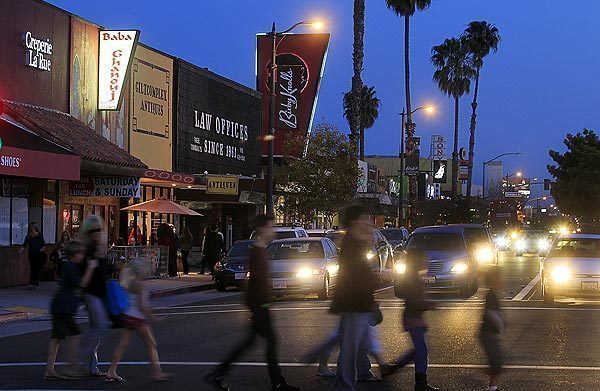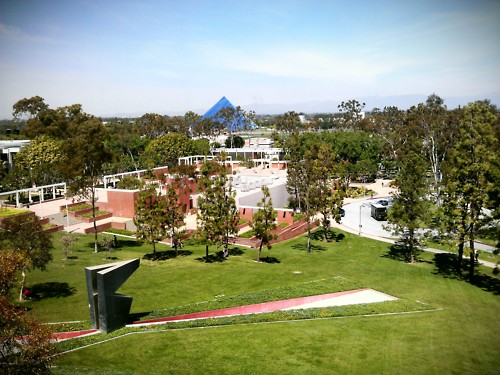
Moderate temperatures and fresh ocean breezes dominate the Ocean Blvd. corridor area of Downtown Long Beach. An eclectic mix of older, historic buildings and newer, high-rise condominiums make up the core of residential living....
Walking distance to public transportation and close proximity to the beach, entertainment, restaurants, weekly farmer’s market, The Pike, and the East Village Arts District make it a favorite place to live.
Some of the more popular residential buildings in Downtown Long Beach include:
AQUA Towers, West Ocean Towers, Harbor Towers, International Tower, Villa Riviera, The Pacific, 1000 Ocean Blvd., 1230 Ocean Blvd., 1500 Ocean Blvd., The Ocean Club, The Meridian, Queen’s Surf, Cooper Arms, Artaban, Royal Palms, and The Blackstone.
The Promenade, The Lafayette, The Willmore, Insurance Exchange Lofts, Kress Lofts, Walker Lofts, Temple Lofts, and Courtyard Lofts
Other neighborhoods in or adjacent to the Downtown Long Beach core include Alamitos Beach and Bluff Park/Bluff Heights.
Alamitos Beach is a dense, coastal neighborhood that is bounded by Junipero Ave. (east), Shoreline Drive and Alamitos Blvd. (west), and Ocean Blvd. (south). This area is mainly residential, with a mix of condominium buildings, apartment buildings, and single family residences. Alamitos Beach is an older, established neighborhood of Long Beach, with many residences dating back to the 1920’s – 1940’s.
Bluff Park is a small, upscale neighborhood on Ocean Blvd. bordered by Junipero Ave. (west), 2nd St./Broadway (north), and Loma Ave. (east). The area consists of many older, well-maintained homes, some of which are on sizable lots. Bluff Heights, located to the north of Bluff Park, is a neighborhood that mainly features Mission-style bungalows built from approximately 1910 – 1923.

A popular neighborhood of Long Beach, Belmont Shore is anchored by both shoreline and Second Street, a wide boulevard teeming with meandering foot traffic, smaller shops, eateries, and people watching. Smaller streets connect...
Second Street to the beach area, known for its volleyball, sunbathing, swimming, cycling, and sail boats. Both vibrant and eclectic, the Belmont Shore area mixes a sophisticated palette with a “small-town” neighborhood vibe.
Belmont Heights is located in the southeast part of Long Beach, bordered by the Pacific Ocean and Belmont Shore. The area is primarily residential; however, it has a vibrant business district along Broadway, east of Redondo Ave. A portion of Belmont Heights has been designated a historic landmark district by the city, spanning approximately 7th St. (north), 4th St. (south), Newport Ave. (west), and Roswell Ave. (east). Craftsman bungalows are dominant within the historical district; however, other early twentieth-century architectural styles include Victorian, Spanish Revival and Mediterranean, Tudor Revival, and Neo-Traditional.
Located at the far east end of Ocean Blvd., the Peninsula neighborhood faces the ocean on one side and Alamitos Bay and Naples Island on the other side. Views from these homes (depending on the orientation) include Catalina Island, Naples Island, and the San Bernadino Mountains. Residences in The Peninsula range from small, shingled cottages to multi-million dollar mansions.
Alamitos Heights is a neighborhood in the southeast portion of Long Beach bounded by Pacific Coast Highway (north), Colorado St. (south), Park Ave. (west), and Bellflower Blvd. Less than a mile from the beach and rising to 90 feet above sea level, this is one of the finest residential neighborhoods in Long Beach, with older, well-maintained homes on larger lots and tree-lined streets. Surrounding neighborhoods include Alamitos Bay, University Park Estates, Park Estates, Recreation Park, and Belmont Heights.
Naples is a coastal neighborhood of Long Beach built across three islands in Alamitos Bay. Canals, which open into the bay, divide the three islands. In the center of Naples is a large fountain that serves as a popular gathering spot and most island streets sport Italian names. The charming residences on Naples Island range from quaint cottages to large, waterfront estates. Visitors to this unique neighborhood can navigate through the canals through hired gondolas or individually rented water bikes.
The 4th St. corridor (aka “Retro Row”) is a small business district east of Downtown Long Beach known for its quirky, vintage furniture and clothing stores, juxtaposed with a variety of bars, restaurants, and coffee houses. The 4th St. corridor also houses the oldest operating single-screen motion picture venue in Long Beach – The Art Theater. The Corridor passes between four neighborhoods: Alamitos Beach (south), North Alamitos Beach (northwest), Rose Park South (northeast), and Carroll Park (southeast).
Rose Park and Rose Park South are adjacent neighborhoods first settled c. 1905 – 1921 that combine to form two Long Beach historical districts. The Rose Park Historic District’s name derives from the small, circular park at the intersection of 8th St. and Orizaba Ave. The majority of homes constructed in this area through the 1920’s are Craftsman bungalows; however, other homes were constructed in the Spanish Colonial, Prarie/Mission-Revival, Ranch, and Neo-Traditional styles. To the west of Rose Park is the Hellman Street area, also a historic district with a high concentration of Craftsman bungalows.
Carroll Park was the first planned housing tract in Long Beach, built around 1900 by John Carroll, and is a city-designated historic landmark district. It is purely a residential neighborhood, with curving streets (to deter traffic) and landscaped islands. The neighborhood’s circular layout lends a “tucked away” feel, away from the hustle and bustle of the world around. Carroll Park’s well-maintained homes and duplexes reflect a wide variety of architectural styles, spanning approximately 1898 – 1940.

Bixby Knolls is a small neighborhood of Long Beach spanning North Long Beach to the north, California Heights on the southeast, and the Wrigley neighborhood to the southwest. Most homes were built between 1920 – 1940 and exemplify...
a rich blend of architectural styles. Trendy small shops and eateries are found along Atlantic Ave., one of the main north-south arteries through the neighborhood. Bixby Knolls has a vibrant, local-community, and is home to literary clubs, the Historical Society of Long Beach, and the Long Beach Shakespeare Company.
On the west side of the Bixby Knolls neighborhood, abutting the Los Angeles River, is the sizable Virginia Country Club. The Virginia Country Club golf course and Los Cerritos Ranch House (a city-owned historical site) are located in the adjacent Los Cerritos and Virginia Country Club neighborhoods, typically considered part of Bixby Knolls. The Los Cerritos/Virginia Country Club area is one of the more affluent areas of Long Beach. Homes in the area have been used in several notable movies and commercials.
California Heights abuts the Bixby Knolls and Bixby Terrace areas to the north, and is a Long Beach-designated historic district. Once originally grazing land, upon the discovery of oil in the early 1920’s (in neighboring Signal Hill), the California Heights and adjoining Chateau Thierry areas were subsequently subdivided and contain largely 1920’s and 1930’s period homes.

This neighborhood is principally made up of large, tree-lined, boulevards of single-family, detached homes built in the post WWII era. Virtually indistinguishable from the architecture of neighboring Lakewood, much of this area...
was originally developed as part of Lakewood and then later annexed into Long Beach. “East Long Beach” is a catch-all phrase for a wide geographic area that includes smaller neighborhoods such as Carson Park, Plaza, South of Conant, and Lakewood Village.
Lakewood Village (aka “The Village”) is a neighborhood in the northeast part of Long Beach, surrounded by the city of Lakewood. The Village is located near several freeways and sports multiple parks and top-rated schools, along with the Lakewood Country Club. Lakewood Village is part of the 90808 zip code that also includes El Dorado Park Estates, Los Altos, and Rancho Park Estates, with the second highest real estate values in Long Beach. Older, well maintained homes (often from the 1930’s – 1940’s) dominate the area and reflect a rich variety of architectural styles.
The Plaza is a residential neighborhood located north of the 405 freeway bordered by Stearns Street (south), Studebaker Road (east), and Palo Verde Ave. (west). The majority of homes were built in the early-to-mid twentieth century, along tree-lined streets filled with dog walkers and families. East Spring Street (east Long Beach’s primary shopping and dining area) is located in the Plaza area.
The El Dorado Park neighborhood of Long Beach is located on the east side of the city, adjacent to El Dorado Park (developed in 1968). It is bordered by Lakewood (north), Hawaiian Gardens (northeast), Los Alamitos (east), and Stearns Street (south). El Dorado Park South is a quiet residential neighborhood bordering El Dorado Regional Park and the Seal Beach city line, known for its family oriented atmosphere and tree-lined streets.